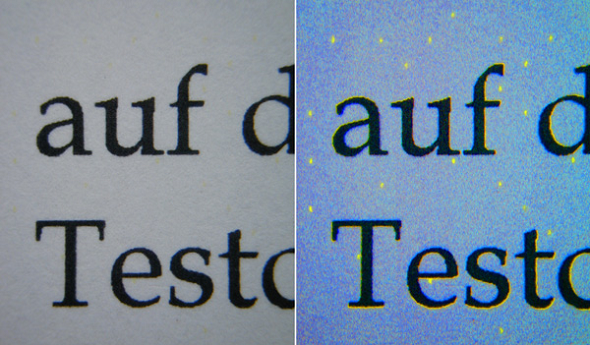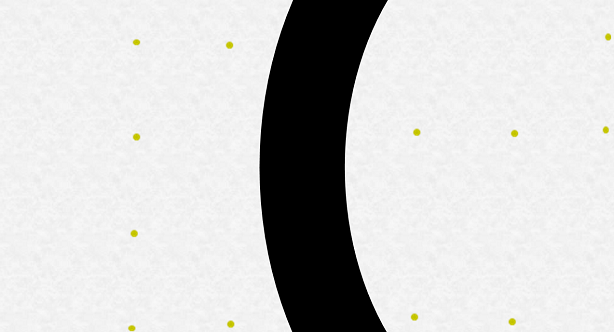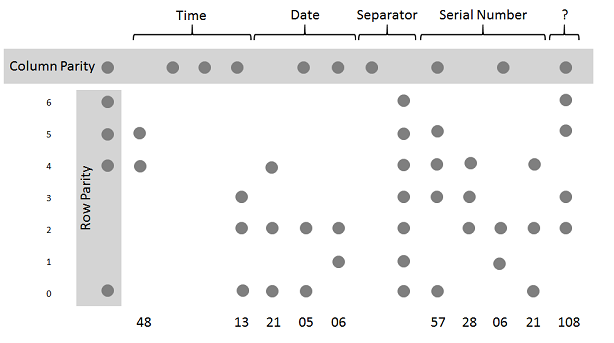Many color laser printers add tiny yellow dots to each page they print. These dots encode a timestamp, the printer serial number and potentially additional information. Although these dot codes have been around for at least 25 years, not much is publicly known about them.
In 2004 the computer magazine PC World published an article titled “Government Uses Color Laser Printer Technology to Track Documents“. In the article it said: “According to experts, several printer companies quietly encode the serial number and the manufacturing code of their color laser printers and color copiers on every document those machines produce.”
Printer steganography
The concept described by PC World works as follows: When a color printer (or a color copier) prints a document, it adds a pattern of tiny yellow dots (about 0.1 millimeter in diameter) to the paper. These dots are barely visible to the naked eye. The dots encode a message, which includes an identification of the printer as well as the date and time of the printing process. This means: If one knows the code, one can easily determine the origin of a printout just by looking at it.
As it seems, different printer manufacturers use different dot codes. At least one of these codes was broken by the Electronic Frontier Foundation. It is used by Xerox printers:
The document in question was printed on [20]06-05-21 at 13:48. The serial number of the printer is 21062857. This dot pattern only fills a few square centimeters. On an ordinary sized piece of paper (e.g. letter or A4) it is repeated about 150 times. This means that you only need a small excerpt from a printed document in order to read the code.
To see the dots you can scan in a printout at a high resolution (600 dpi or more) and magnify it. For more detailed instructions, check here.
The dot code mystery
Although the yellow dots have been around for at least 25 years, not much is known about them. While a few codes have been successfully analysed, most still remain a mystery. No printer manufacturer or government authority has ever published any details about the yellow dots. Still many questions are unanswered:
- How many codes are there? How do they work?
- Not all color laser printets print the yellow dots. Do the others use another coding method?
- Black and white laser printers don’t print dots (printing yellow dots with a BW printer doesn’t work anyway). Do they use another coding method?
- Ink jet printers don’t print dots, either. Do they use another coding technique?
- If other coding methods are used, which ones? There are many possibilities: isotopic labeling, micro taggants, DNA steganography, fluorescent taggants, greyscale codes, microprinting, …
- Who can decode the yellow dots? Printer manufacturers? Some government agencies?
- Who developed the dot codes? The NSA? The FBI?
- Are there similar codes used for other objects? I know that explosives are marked in some cases. Almost every item (inluding humans) can be marked with a radioactive substance, as done in the Cold War. Is there more?
In the last ten years not much new has been published about printer steganography. With the help of my readers this could be changed. Do you have an answer to one of the questions above? If yes, please let me know. Does your printer use a yellow dot code? If yes, I would be pleased to receive a scan.
Follow @KlausSchmeh
Linkedin: https://www.linkedin.com/groups/13501820
Facebook: https://www.facebook.com/groups/763282653806483/
Further reading: The world record crypto challenge





Kommentare (20)